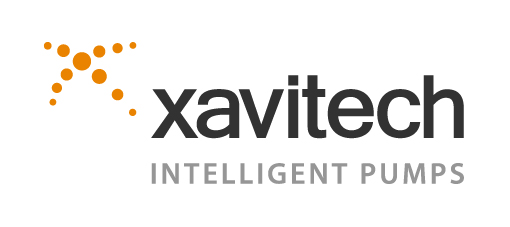Frequently Asked Questions
Please see respective datasheet for how to connect the pump. On our Youtube channel there are also videos covering this: https://youtube.com/@xavitech-intelligentpumps
Power/current consumption numbers can be found in the datasheets. For further information, please contact us.
We recommend a capacitor to reduce stress on the power supply. As the pump is driven by an electromagnet, the peak current is high. This peak is reduced with a capacitor. The capacitor also helps reducing the back EMF current from the electromagnet. For 24 volt pumps we require the use of a capacitor to prevent damage to the pump’s internal voltage regulator.
The noise and sounds of a pump are dependent on many things such as set speed, system resistance, in-line filters and dampeners. Our pumps can also be tuned in production to output as little noise as possible within the customers performance specifications. Also, perceived noise does not always correspond to actual sound pressure level. Please contact us if you wish to discuss how we can reduce noise for your application.
We offer the V/P250 series of pumps that are developed for liquids. However, all Xavitech pumps can pump liquids if needed. Please contact us to discuss liquid applications and which pump is best for your needs.
No, Xavitech pumps needs a fixed DC voltage. They can however be controlled via serial commands or an analog voltage on the IOX-line. If the pump needs to be controlled in some other way, for example a PWM signal on the IOX-line, we can provide custom firmware to accommodate that. Contact us for more information.
Our pumps are normally calibrated to run at 5, 12 or 24 volts. Xavitech offers custom calibration for almost any voltage in the span 5-24 volts for X1500 and X200 pumps and 5-12 volts for V100 pumps. In certain instances, depending on exact needs in terms of performance, pumps can be calibrated to run at under 5 volts. Please contact us for more information.
In contrast to most other pumps, Xavitech pumps have built-in electronics. This enables the ability to control the pump via serial interface, to get feedback from the pump and the use of custom firmware to enable even more functions. Examples of smart/intelligent features: Pressure change detection, voltage variation compensation, programmable maximum vacuum/pressure. Discover more about smart features and customization.
No, there are no actual sensors built in. However, the pumps can be configured to, in some instances, replace external sensors. For example, the maximum pressure/vacuum can be set at calibration to a specific value, the pump can be configured to compensate for voltage variation and the pump can be configured to detect system pressure changes. Discover more about smart features and customization.
